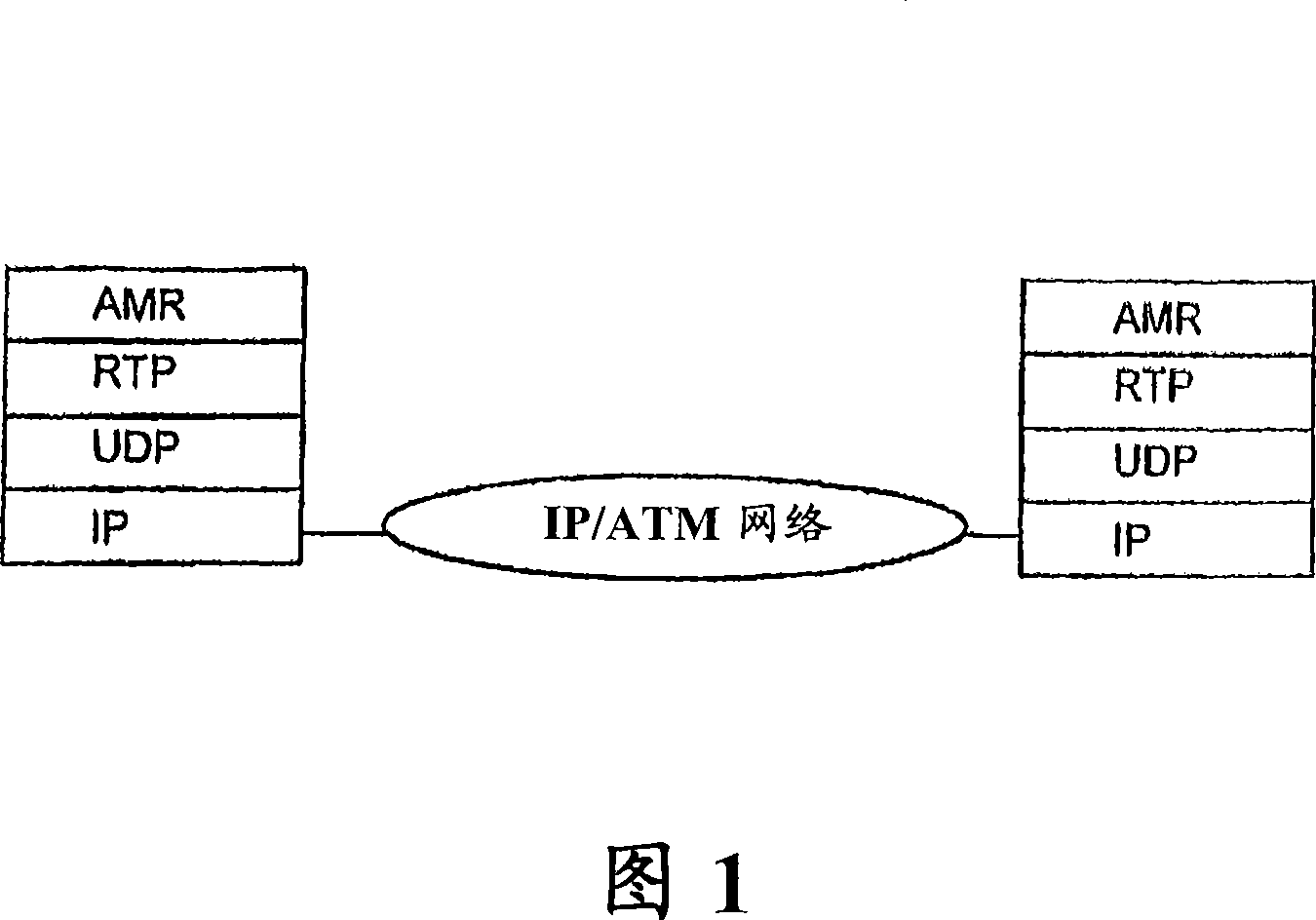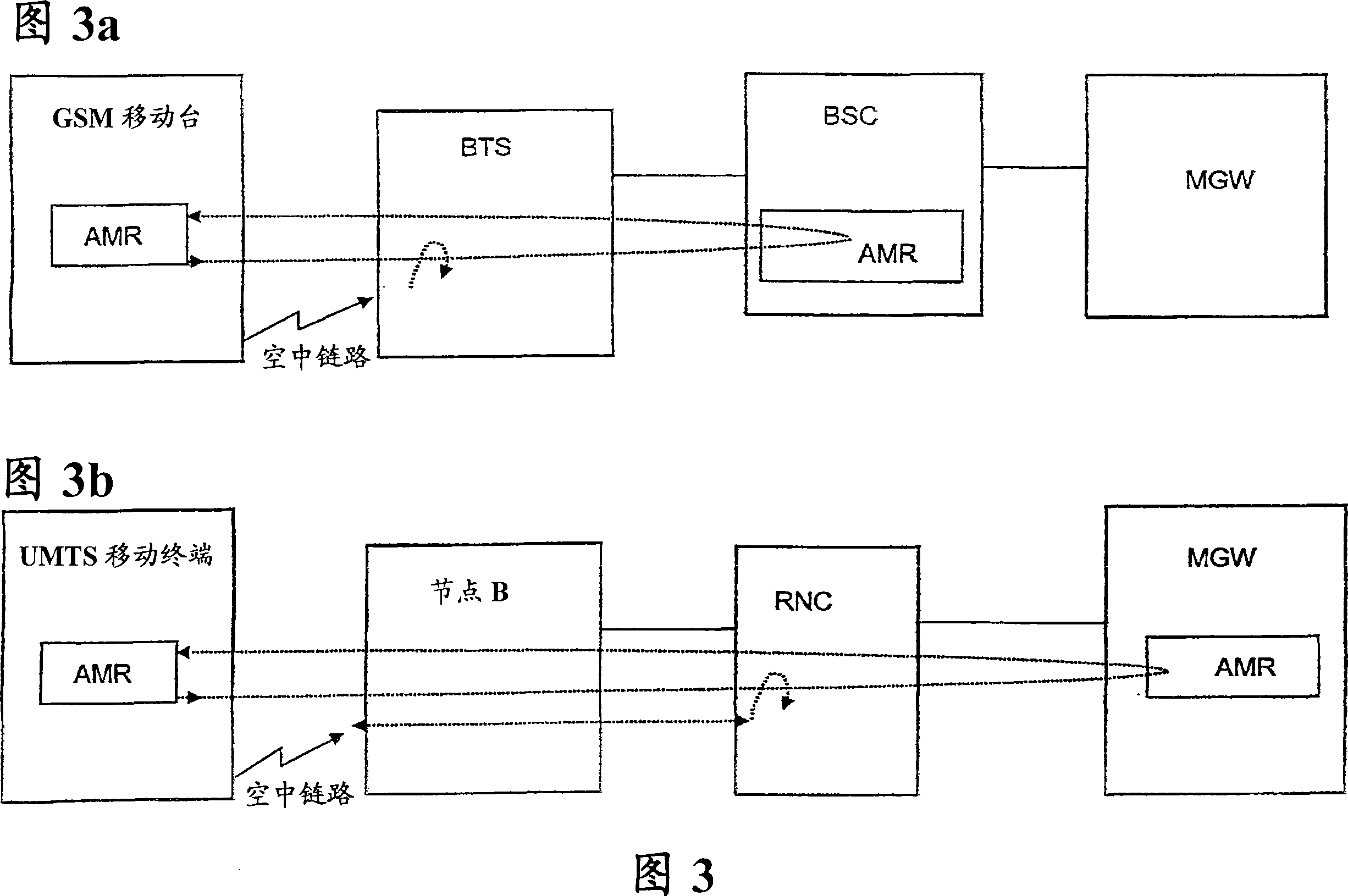Adaptive mobile telephony voice transport via an Internet protocol network
A network and voice technology, applied in the field of adaptive transmission of mobile phone voice communication, can solve the problems of reducing the packet sending rate and not considering the wireless interface, etc.
- Summary
- Abstract
- Description
- Claims
- Application Information
AI Technical Summary
Problems solved by technology
Method used
Image
Examples
Embodiment Construction
[0046] The key factor of the above rate control is to use only one encoder and only one decoder on the whole end-to-end path. Rate control makes the selected rate suitable for all links on the path. This principle idea is now embodied in the proposed solution incorporating IP congestion handling. The solution will combine air interface adaptability with adaptability in the IP network, as described above. One case is used for VoIP on the packet core network (GPRS with IP backbone network in GSM / WCDMA); the other involves circuit switching services on the IP backbone network.
[0047] Figures 4a and 4b show the principles of the invention in GSM and UMTS networks respectively, where rate adaptation is used for the case in wireless and IP transport networks. Rate adaptation is performed according to available resources in the wireless and some intermediate IP networks. The interaction process can be described as follows:
[0048] 1) Two mobile stations, preferably CS terminal...
PUM
 Login to View More
Login to View More Abstract
Description
Claims
Application Information
 Login to View More
Login to View More - R&D
- Intellectual Property
- Life Sciences
- Materials
- Tech Scout
- Unparalleled Data Quality
- Higher Quality Content
- 60% Fewer Hallucinations
Browse by: Latest US Patents, China's latest patents, Technical Efficacy Thesaurus, Application Domain, Technology Topic, Popular Technical Reports.
© 2025 PatSnap. All rights reserved.Legal|Privacy policy|Modern Slavery Act Transparency Statement|Sitemap|About US| Contact US: help@patsnap.com



